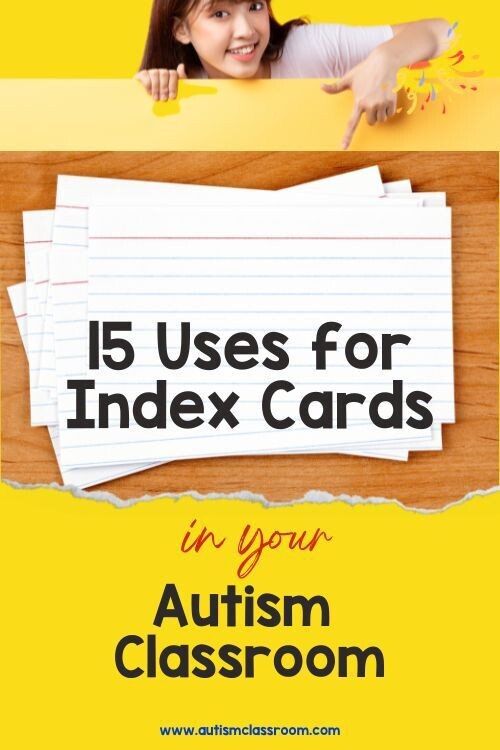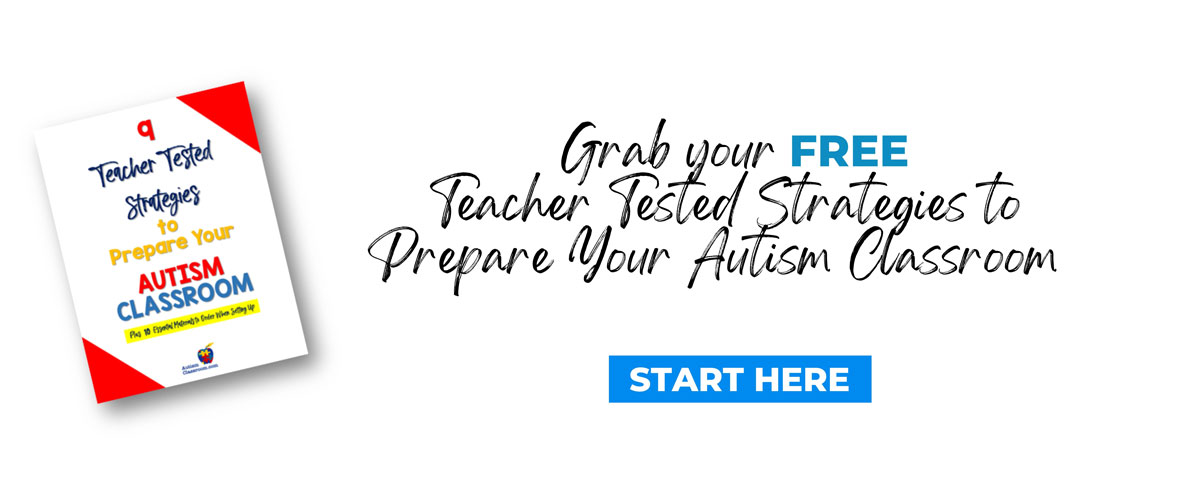
When it comes to teaching unique learners, it’s helpful to have lots of tools and tricks up your sleeve. Items for the classroom often come out of the teacher’s pockets and can quickly add up. Index cards are a cheap and easy-to-find resource that can be used in many ways.
Index cards are great when you are just starting out. They definitely help with classroom set up when you don’t have the supplies that you have ordered. Or, when you don’t have a lot of funds to purchase supplies. In some cases, you may not have had the chance to go through the IEP and you just need some activities for the students at the beginning of the year. Here are 15 ways you can utilize index cards for your students with autism.
General Use
- Alphabet Cards: Handwrite letters on each card.
- Number Cards: Write numbers on each card.
- Color Cards: Make a square with a marker for each color card on a separate card. Color in the square to make color flash cards.
- Matching: Use the 3 ideas above and make a second set for a matching game.
- Identifying By Pointing – Have students point to identify a vocabulary word or picture on a card.
- Sorting – For sorting, you can use the colorful index cards. Get the pack that comes with green, red, blue, and yellow index cards. Place in different plastic containers and have students sort.
- Cutting For Scissor Work: For the scissor work, you can use index card strips or just draw a line on them so that the student could cut on the line to cut the index cards into strips.
- Cutting Shapes: Write on the shapes that you want the student to cut and have the students cut on the line to make the shape.
Reading
- Sight Word Illustrations: Many students with autism are visual learners. They may have delayed speech, speech and language impairments, and language processing difficulties. Basic phonics activities and skills can be challenging. Using index cards with the word and a drawing can help to visually process the word and capture it in their mind. Make a lesson out of having students create vocabulary flashcards by gluing the image you give them onto the card with the word. It’s also an activity that parents can do at home instead of giving basic written homework.
- Tactile Letter Identification: Index cards can be used to create unique letters that students can trace with a dry-erase marker or with their fingers. Letters can be created in various sizes and with various materials. Students can create their own cards or practice with pre-made cards. Letters can be made with fuzzy puffs, liquid glue (write letters with glue and wait for it to dry), glitter, sandpaper, etc.
Math
- Folding/Fractions: Many students today struggle with fine motor skills which make it difficult for them to fold, especially when working with a large piece of paper. It is easier for them to evenly fold index cards. Students can build fine motor skills by using index cards to practice folding them in half to make a tent or a boat. This will build fine motor skills, allow them to use their imaginations, and practice fraction skills.
- Number Identification/1:1 Correspondence: Like the letter identification activity, you can write numbers using various materials such as liquid glue (wait for it to dry), pom-poms, pipe cleaners, etc. You can also laminate cards so that you can use them and reuse them with dry-erase boards. To practice counting, you can write the number you want the student/students to practice on a card and make dots on the back to show that number. Dots can be made with various textured items such as puffy paint, glue/glitter, stickers, and Velcro dots. Whenever possible, have the students make the cards with you.
Writing
- Writing Imitation: Write anything you want the student to copy on an index card. This can be very useful for students learning to write their names. Write their name or the word they are trying to learn on an index card and place it in a protective index sleeve or laminate it. You can write the word in glue and write over it in marker to make it textured. You can also write it in glitter glue. Have the child wear it on a lanyard or keep it in a familiar place to use as a resource. Several words can be placed on a ring for the student to practice or you can place them in a pocket sleeve and put them in the students’ binder to make a traveling word wall.
Sensory/Fine Motor
- Sensory Cards: Glue various textured objects to each index card and have students practice using words to describe how it feels. Items could include sandpaper, a soft Velcro dot, a rough Velcro dot, a sticky hand toy, and glue dots. This is great for students to focus on sensory items.
- Matching Numbers and Objects: Write one number on each index card. Numbers may vary depending on the skill you are trying to teach. You can number cards 0-10 and have students use tweezers to place small objects, such as cubes, in front of the correct number. You can use this same strategy with tens rods and one’s cubes to practice modeling numbers 10-100. The size of the tweezers and objects should vary depending on the student’s independent fine motor skills.
All these activities can be easily adapted to various abilities and grade levels. Plus, if the cards mess up, the index cards are easily replaceable. Grab some index cards, save your money, and get started with some easy to create materials.


